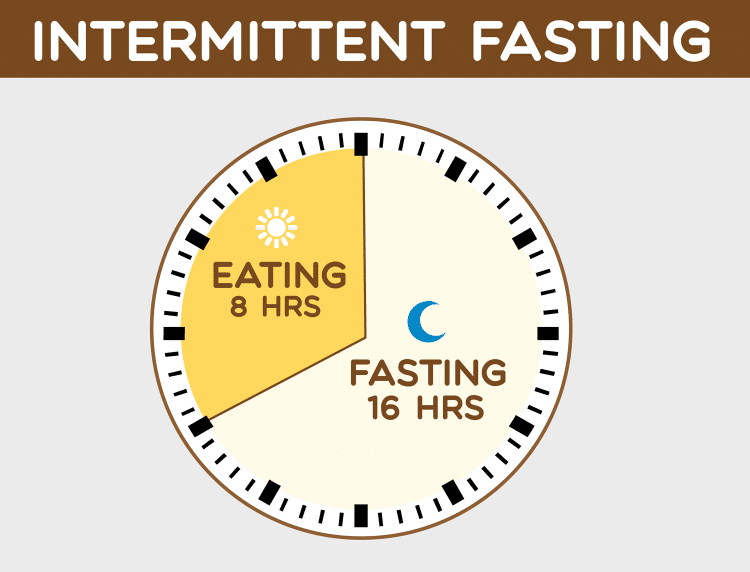Exercise and nutrition are two sides of the same coin.
While working out regularly or eating healthily will undoubtedly do you good, combining them is where the magic happens. A good training program paired with a sustainable, healthy diet can transform your health, appearance, and performance – it’s like 1+1 = 5!
However, nutrition – like training – can often seem very complicated.
Much of the information available is biased, contradictory, or just plain wrong. Some of the most popular and well-known diets are so unbalanced and restrictive that sticking to them for more than a week or two is impossible.
Consequently, a large percentage of dieters fail to achieve their weight loss goals. According to research, as many as 90% of dieters fail to reach their weight loss target or regain whatever weight they worked so hard to lose in 12 months or less (1).
That’s an atrocious success rate.
Level Up Your Fitness: Join our 💪 strong community in Fitness Volt Newsletter. Get daily inspiration, expert-backed workouts, nutrition tips, the latest in strength sports, and the support you need to reach your goals. Subscribe for free!
However, not all diets are doomed to fail, and one of the most effective and maintainable is intermittent fasting (IF), also known as time-restricted eating (TRE). With this diet, it’s less about what you eat and more about when.
While I have followed TRE in the past, I’ve never done it consistently. So, when I was recently challenged to stick to an 8-hour eating window for three weeks, I was excited to see how it would affect my physical and mental performance and, of course, my body composition.
In this article, I share my experience of switching from conventional meal timings to time-restricted eating (TRE).
What is Time-Restricted Eating?
Time-restricted eating (TRE) is a form of intermittent fasting (IF). During TRE, your food consumption is limited to “eating windows” lasting anywhere from 4-12 hours per day. Outside of these windows, you are only allowed to consume kilocalorie-free beverages, e.g., black coffee and tea, herbal infusions, water, etc.
According to research, time-restricted eating offers several potential benefits, including (2):
- Improved Metabolic Health – increased insulin sensitivity, lower blood sugar levels, and a reduced risk of type 2 diabetes.
- Weight Management – lower calorie intake without counting calories, potentially leading to fat loss.
- Enhanced Cellular Repair – promotes autophagy, which is your body’s process of removing damaged cells.
- Better Heart Health – lower blood pressure, triglycerides, and LDL cholesterol.
- Reduced Inflammation – decreased systemic inflammation, which is linked to various chronic diseases.
- Optimized Hormone Regulation – balances cortisol, leptin, and ghrelin levels, improving appetite control.
- Increased Longevity – TRE may extend lifespan by reducing free radical damage and oxidative stress. Many Blue Zone residents practice time-restricted eating.
- Improved Gut Health – allows the digestive system to rest, supporting a healthier gut microbiome.
- Cognitive Benefits – enhanced brain function, memory, and neuroprotection by reducing oxidative stress.
Needless to say, this research is hugely encouraging and helps explain why TRE is such a hot dietary topic.
In my experience as a veteran personal trainer and nutrition coach, the easier a diet is to follow, the more likely you are to stick with it, and the better your results will be. TRE couldn’t be simpler – just limit your meals to a 4-12 window, and don’t eat the rest of the time.
Of course, real-world results don’t always match what the research says, so I was keen to discover just how effective time-restricted eating really was.
My Three-Week Time-Restricted Eating Plan
I read a lot of studies and enjoy researching new health, fitness, and nutrition topics. But, invariably, there usually comes a time when the reading must stop and I must start putting into practice what I have learned.
After all, you learn more by doing than reading.
So, armed with all the necessary information I embarked on a three-week time-restricted eating experiment to see how effective this dietary regimen really was.
My TRE Plan
With my military background, I’m a big fan of the KISS principle – keep it simple, stupid! So, with that in mind, I avoided making my three-week time-restricted eating experiment more complicated than it needed to be and just focused on the basics.
The main points of my plan TRE plan were:
- An 8-hour eating window with the last meal finished no later than 8 pm.
- First meal of the day is eaten at midday.
- Two main meals and 1-2 snacks per day.
- Consume water and unsweetened herbal teas freely plus 2-3 cups of black coffee per day.
- Exercise as normal – four late afternoon cardio and strength workouts per week.
- Maintain my 10,000+ steps per day walking habit.
In other words, for three weeks I skipped breakfast and my usual mid-morning snack and started eating with an early lunch. I then had a mid-afternoon and early-evening snack and a light dinner at around 7 pm.
This protocol is a variation of the 16:8 IF diet plan, one of the most popular time-restricted eating plans around.
Week One – Hunger Strikes!
I normally start my day with a big bowl of oatmeal or overnight oats, a protein shake, and a mug or two of freshly brewed coffee. This is typically consumed after walking 2-3 miles with my dogs. In fact, on cold mornings, it’s the thought of maple syrup-laced oatmeal that helps me get around my walk.
Not having breakfast came as quite a shock as not only is it one of my favorite meals of the day, but I was brought up believing it was also one of the most important. Skipping breakfast actually made me feel kinda naughty!
Thankfully, I was still allowed my morning coffee, or life would quickly have become unbearable…
Energy-wise, I felt pretty good and didn’t notice any decrease in morning physical or mental performance. However, I tend to train later in the day so, aside from my morning walks, I didn’t do much in the way of fasted exercise during this experiment.
Emotional effects aside, that first week of not eating breakfast triggered some gnarly hunger and my stomach rumbled so loudly that even my clients could hear it.
Level Up Your Fitness: Join our 💪 strong community in Fitness Volt Newsletter. Get daily inspiration, expert-backed workouts, nutrition tips, the latest in strength sports, and the support you need to reach your goals. Subscribe for free!
As a result, when it was time to eat at midday, my first few lunches were overly big. While I enjoyed the meals, eating so much food in the middle of the day did leave me feeling drowsy, as large meals often do.
Toward the end of the first week, morning hunger started to become less of an issue, and I didn’t feel the need to consume such a massive lunch. Consequently, afternoon drowsiness was no longer a problem.
Week Two – Finding My Groove
The hardest part of any diet is sticking to it for long enough for it to work. Maintaining my time-restricted eating plan was mercifully simple as all I had to do was not eat breakfast and ensure I finished eating dinner by no later than 8 pm.
Consequently, by week two I was finding TRE pretty easy. Not having breakfast was actually something of a timesaver, and I appreciated not having to cook oatmeal as I rushed around getting ready for work.
Morning hunger levels were very manageable, and my stomach no longer growled like an angry tiger. There were even a few days when I almost forgot to eat lunch because I didn’t feel hungry.
On the downside, following TRE was a little awkward at weekends when, traditionally, I go out for meals with my family and friends. My insistence on dining earlier than usual meant that everyone else had to get on board with my experiment.
However, this was a reminder that any diet, even one as simple as TRE, can have an impact that goes beyond just what you eat and can affect your family and friends. Peer pressure could even make sticking to a diet more difficult than it already is.
Of course, TRE is very flexible, and you could easily skip it for a day and get back on track tomorrow. However, I had committed to three weeks, so that’s what I was going to do.
Week Three – You Call This a Diet?
As week two became week three, I all but forgot that I was on a time-restricted eating plan. All I was doing was skipping breakfast and not having my usual morning snack, after all.
As diets go, it couldn’t have been simpler.
Evening meals took a little planning so that I always finished eating before the end of my eight-hour window. Consequently, I made sure I prepped all the ingredients well in advance to ensure I ate on time.
Workout-wise, TRE had no noticeable effects on my energy or exercise performance. This wasn’t much of a surprise given that I usually work out late afternoons, which was after a meal and a snack. My dinner was my post-training meal, so recovery was unaffected, too.
All this ease made me wonder if TRE would actually provide any benefits. After all, diets are supposed to be hard, right?
So, how did three weeks of time-restricted eating affect me? Check out the next section and find out!
Results and Impressions from Three Weeks of Time-Restricted Eating
I followed my three-week time-restricted eating plan consistently and didn’t cheat at any point. This ensured that my one 21-day TRE experiment provided the best possible results:
Weight Loss:
Despite already being pretty lean, I lost four pounds and was more defined by the end of my three-week TRE experiment. This happened despite not consciously eating smaller meals or fewer kilocalories. However, cutting one meal and one snack from my usual diet created a significant energy deficit, forcing my body to burn more fat for fuel.

Morning Energy:
Maybe it was consuming coffee on an empty stomach, but even with some first-week hunger, I felt more energetic and awake most mornings. There was no mid-morning slump, and I was able to power through the early part of every day without stopping.
Focus and Concentration:
My mind felt sharp most mornings, and my productivity remained unchanged. That said, the first few days were a little tougher as the thoughts of food were quite distracting. However, this problem soon vanished as I got used to skipping breakfast.
Better Sleep:
An unexpected but welcome benefit of eating my evening meal a little earlier than usual was that I fell asleep more easily and slept more soundly. I put this down to going to be without a belly full of food, which is what would normally happen if I ate a later dinner.
Less Hurried Mornings:
Not eating in the morning and not having to worry about finding a mid-morning snack was quite liberating. With less to think about and do, I had a few extra minutes to get ready for work. This led to a more relaxed start to each day.
Exercise Performance:
Limiting my meals to 12 pm-8 pm had no noticeable effect on my workouts or my recovery from training. However, this may have been different if I exercised in the morning, i.e., in a fasted state.
A longer, healthier life:
It’s too early to say, but here’s hoping!
Medical Disclaimer: This article is for informational purposes only and is not a substitute for professional medical advice. Always consult your doctor or a qualified healthcare provider before making any changes to your diet or lifestyle, especially if you have underlying health conditions.
Conclusion
Adopting an eight-hour eating window was very rewarding and, once the initial hunger shock subsided, it was easy to maintain. I lost weight without trying, felt mentally sharper, had plenty of energy, and enjoyed more relaxed, productive mornings.
As diets go, TRE was probably the easiest one I’ve ever followed. However, it did make dining out with friends a little difficult, as not everyone enjoys the early bird special!
While I recognize that time-restricted eating is not the perfect eating plan for everyone, I enjoyed the experience and found it largely beneficial.
Have you tried time-restricted eating? How did it go? Share your thoughts and experiences in the comments section below – I’d love to hear from you!
References:
- Mann T, Tomiyama AJ, Westling E, Lew AM, Samuels B, Chatman J. Medicare’s search for effective obesity treatments: diets are not the answer. Am Psychol. 2007 Apr;62(3):220-33. doi: 10.1037/0003-066X.62.3.220. PMID: 17469900.
- Boyd P, O’Connor SG, Heckman-Stoddard BM, Sauter ER. Time-Restricted Feeding Studies and Possible Human Benefits. JNCI Cancer Spectr. 2022 May 2;6(3):pkac032. doi: 10.1093/jncics/pkac032. PMID: 35657339; PMCID: PMC9165551.











